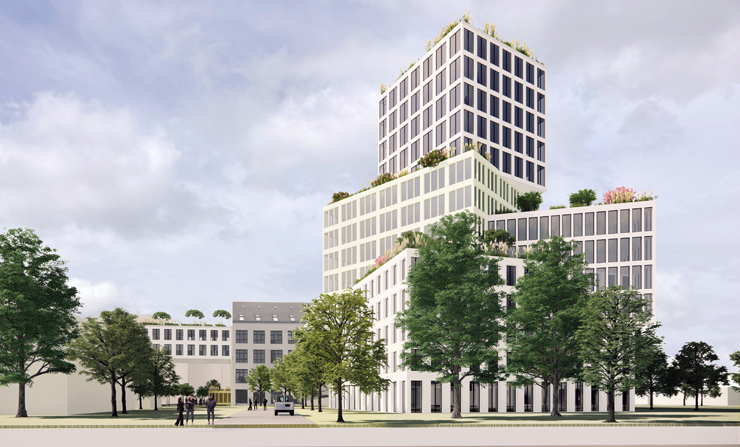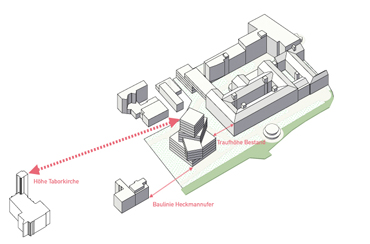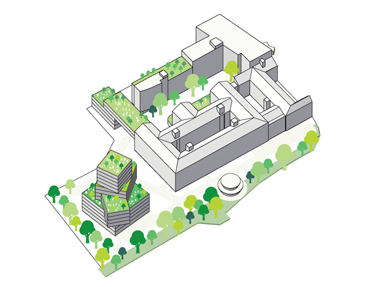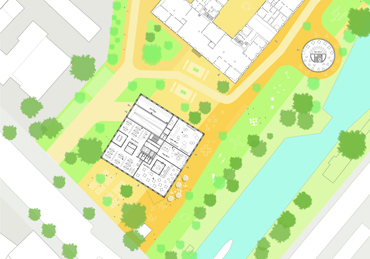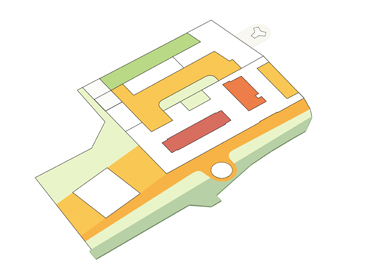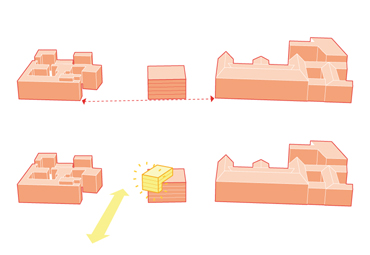morePlatz
architecture / urbanism / art / office / publications / contact deutsch
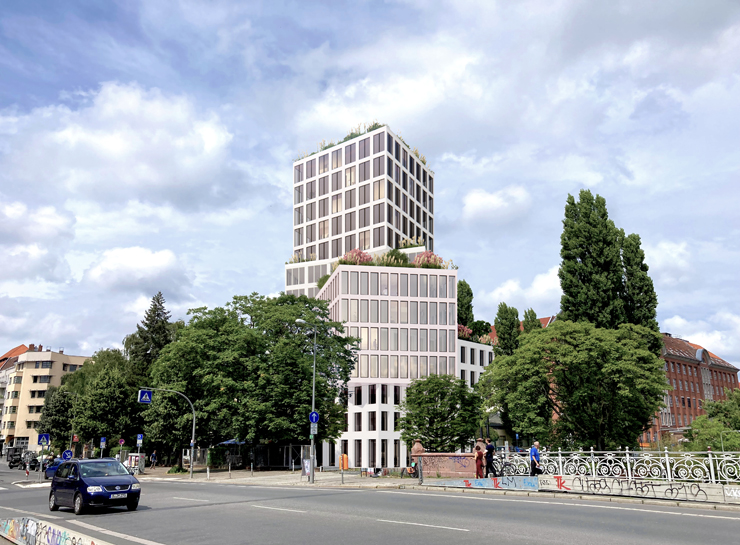
|
The courtyard complex ‚Schellack-Höfe' is characterized by its fantastic location on the Spree and the architectural quality of the existing buildings. In addition to re-densifying the available surface, we interpret the task of the competition in a way that the spatial context and the quality of public spaces should be improved accordingly. |
An important component is the innovative development in the southern area on Schlesische Strasse. Our design concept combines this topic with a holistic proposal, which on the one hand uses the Schellack-Höfe location more intensively, on the other hand opens up to the quarter and integrates itself into the Wrangel-Kiez with new public spaces and functions. At the moment the two courtyards of house no. 26 and 27 are separated by fire walls and accessed via separate access roads. In order to make the location usable as a coherent address, an opening of the courtyards and an additional, connection is proposed.
|
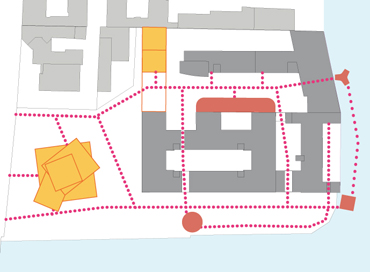 |
|
|
This makes the ground floor zone permeable and delivery and visitor traffic can be organized smoothly thanks to a new access loop. This loop is connected to Schlesische Strasse and serves all entrances and loading areas alike. In the access area, both visitor parking spaces and the entrance to a central underground car park will be arranged below the new building. In this respect, the concept joins the 'car-free Wrangelkiez' initiative: to create good conditions for the necessary delivery traffic, and to develop an innovative mobility concept for existing and future jobs that minimizes the use and presence of individual vehicles. |
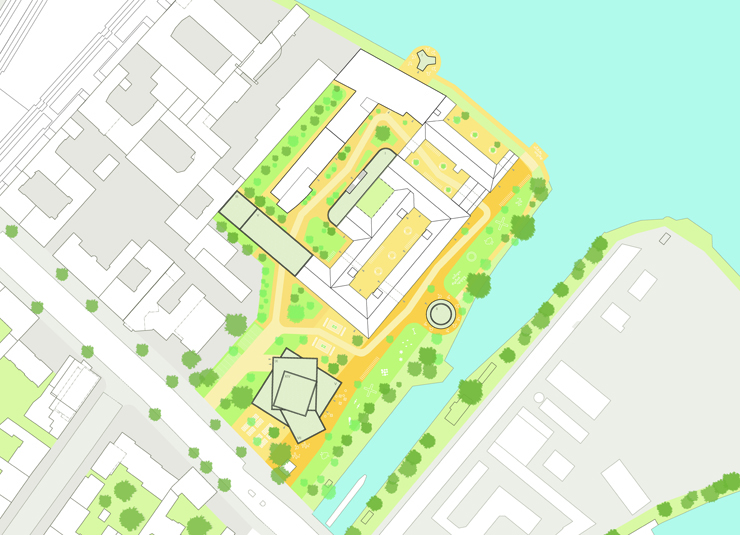
The newly designed development makes it possible to unseal the traffic areas and thus creates opportunities for upgrading the open spaces, e.g. through greening, furnishing and above all by developing the bank areas wherever possible. Outside the secured lock area, the embankment of the Heckmannufer can be opened towards the canal and significantly expand the usable space. To re-densify the partly listed and fully used 'shellac courtyards', the urban layout of the courtyard complex is completed by a bridge that is fitted between the firewall on the west and the southernmost courtyard. This creates a 3-storey portal as an entrance to the central courtyard. The courtyard is completed and preludes a sequence of courtyards of different sizes.
|
 |
|
|
The courtyards are connected, but each develop their own character, as a meeting point, place to stay or even a place of retreat. In addition, a flat building will be added in the area between the fire walls, in which bicycle parking spaces and waste bins will be accommodated. The courtyard can thus remain undisturbed by noisy elements and also has a large, leafy terrace that can be reached both from the courtyard and from the first floor of the neighboring buildings. |
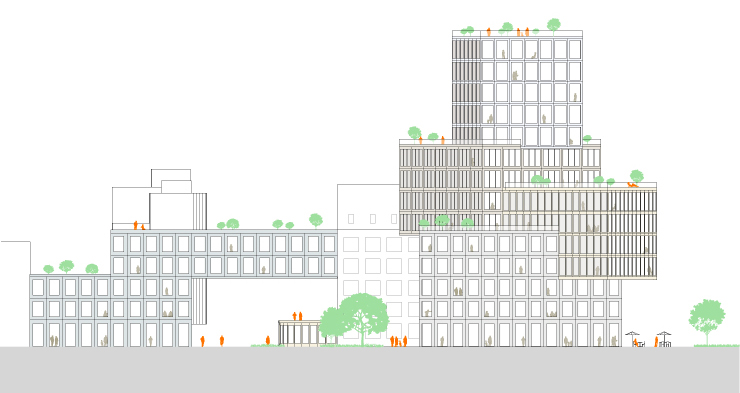

The location of the shellac courtyards offers access to the Spree, which adds an additional new quality to the location. Two floating platforms can be reached by a bridge from the central courtyard and the Heckmann-Ufer and extend the loop for pedestrians to the banks of the Spree. The elongated, flat building will be dismantled along the Heckmann bank and the connection to the bank will be opened up. Here, a round two-storey pavilion marks the entrance to the bank and houses public functions such as exhibition or assembly rooms. |
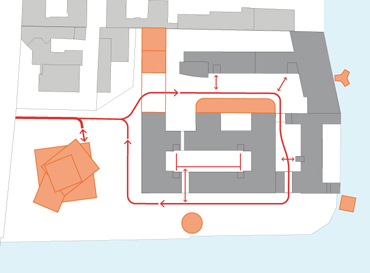 |
|
|
The buildings available for planning on parcel 79/1 will be replaced by an innovative and sustainably constructed new building. It is set back from the Schlesische Strasse in order to preserve or replace the existing trees on Schlesische Strasse as a 'green' address. The alignment between the shellac courtyards and the residential development south of the street is continued towards the Heckmann-Ufer. The height of the building resonates its surroundings, e.g. at the highest point of the steeple of the Taborkirche. It increases the visibility of the location and marks the entrance to Kreuzberg at the Schlesische Brücke. The compact footprint grants free space to the street and good access to the existing courtyards. |

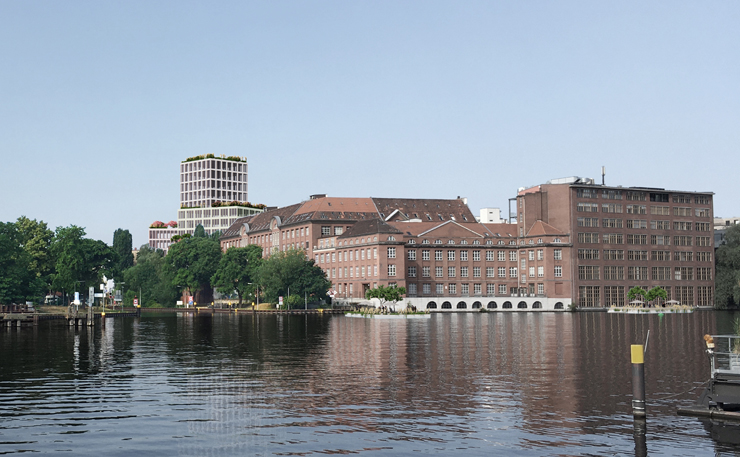
|
|
The building is designed as a compact volume that can offer a wide variety of room types, rental units and uses by stacking differently sized boxes. The volumes are staggered towards the top and are based on the urban development of the surroundings at various levels. The base relates to the adjoining eaves heights of the shellac courtyards, and is designed as a solid block with dimensions that are suitable for larger commercial units and for production. Mainly public or publicly accessible uses are planned on the ground floor, such as gastronomy or shared rooms for conferences or exhibitions. |
Above, smaller, partly intersecting volumes are arranged, which are oriented differently depending on the altitude - e.g. directly on the access to the quarter at the Schlesische Brücke, or in the direction of the Spree on the upper floors. The top floor is also intended for collective use. The building can thus offer very different floor plans and views and large terraces are created on many levels as green outdoor spaces. A comparable gradation can also be found in the conception of the facades with regard to materialization and degree of opening. The lowest part of the building is massive with facades made of glazed brick, as is often found in Berlin commercial courtyards. The upper volumes are each designed slightly different in terms of glazing, facade cladding and color tones in order to design the entire building as a lively sculpture with many facets. |
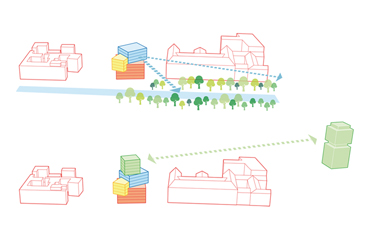 |
